



 |
|
 |
|
Tanbark-oak
Lithocarpus densiflorus
First posted February 14, 2004 Last updated February 14, 2004
![]()
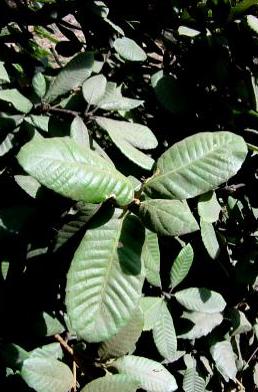 |
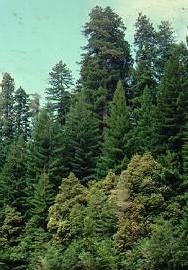 |
The tanbark-oak (Lithocarpus densiflorus)* is not a true oak. The hyphen in the common name means that the common name does not correctly indicate its proper botanical group, that is, the tanbark-oak is not a "true" aok— it is not a member of the genus Quercus. (For a similar situation, see Douglas-fir.) Oak trees have a different type of different male flowers (catkins) and are polinated by the wind; tanbark-oak flowers are like those of chestnuts or chinkapins and are polinated by bees. Tanbark-oaks are more closely related to the chestnut, and the cap to the acorn shares its spiny appearance. It is an evergreen tree/shrub, with a narrow conical crown. It is commonly
found in the coast redwood community and grows to a height of 90 feet,
occasionally to 150 feet. The trunk is 3 - 7 feet in diameter. It sometimes
grows as a shrub, to a height of less than 10 ft (3m). The leaves are
oblong, 4 to 6 inches (6-13 cm) long, just under an inch to just over
2 inches (2-6 cm) wide. They are thick and leathery, with a wavy-toothed
border, shiny light green on the upper surface, whitish beneath, due to
a close matt of wooly "hairs". A pinnate vein pattern is embossed
in the leaf surface. |
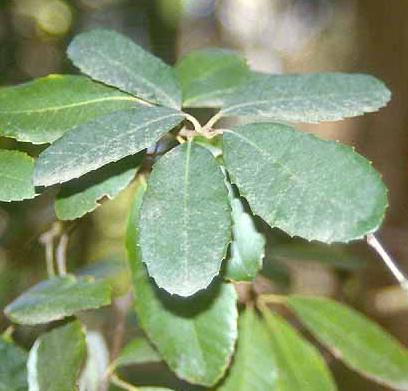 |
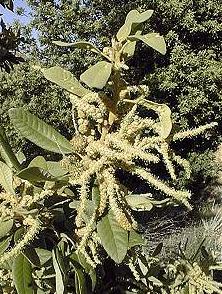 |
Female flowers are brown green and grow at the base of the catkins, which grow on stiff, white, upright stalks and are ill-scented, and appear from June - October. Acorns are egg-shaped, about an inch (2-3 cm) long, based in shallow saucer-shaped cups, covered with dense bristles. Acorns appear from September to November. The bark is grey and becomes deeply fissured with age. It is high in tannin (remember, this is the reddish acid that gives redwoods their name) and the source of its name. It was harvested for its tannic acid, used in tanning hides. The Santa Clara Valley hide business was based on tanbark-oaks from the redwood forest of Big Basin in Santa Cruz. The tanbark-oak is found as part of the coastal forest, from southern Oregon (Cascade Mountains through the Kalamath Mountains) to Ventura County in Southern California. It can stand a wide range of sun and rain conditions. It can grow in sun or partial shade, but is also very shade tolerant. It grows best in rich, moist soil, but stands some drought when established. | 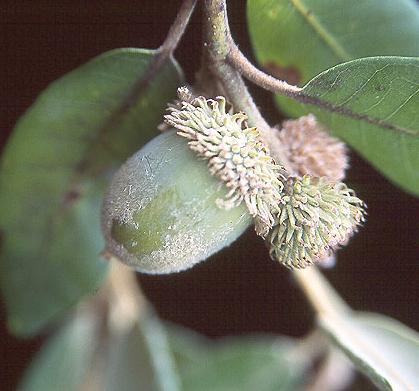 |
The leached acorns were ground into flour by the Indians (tastes like bitter oatmeal).
* Lithocarpus: from Greek lithos, stone, and karpos, fruit, alluding to the
hard fruit (acorn); densiflorus: densely flowered.